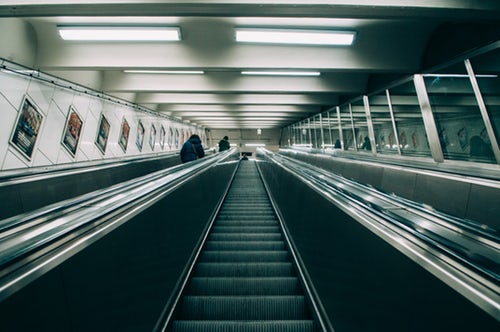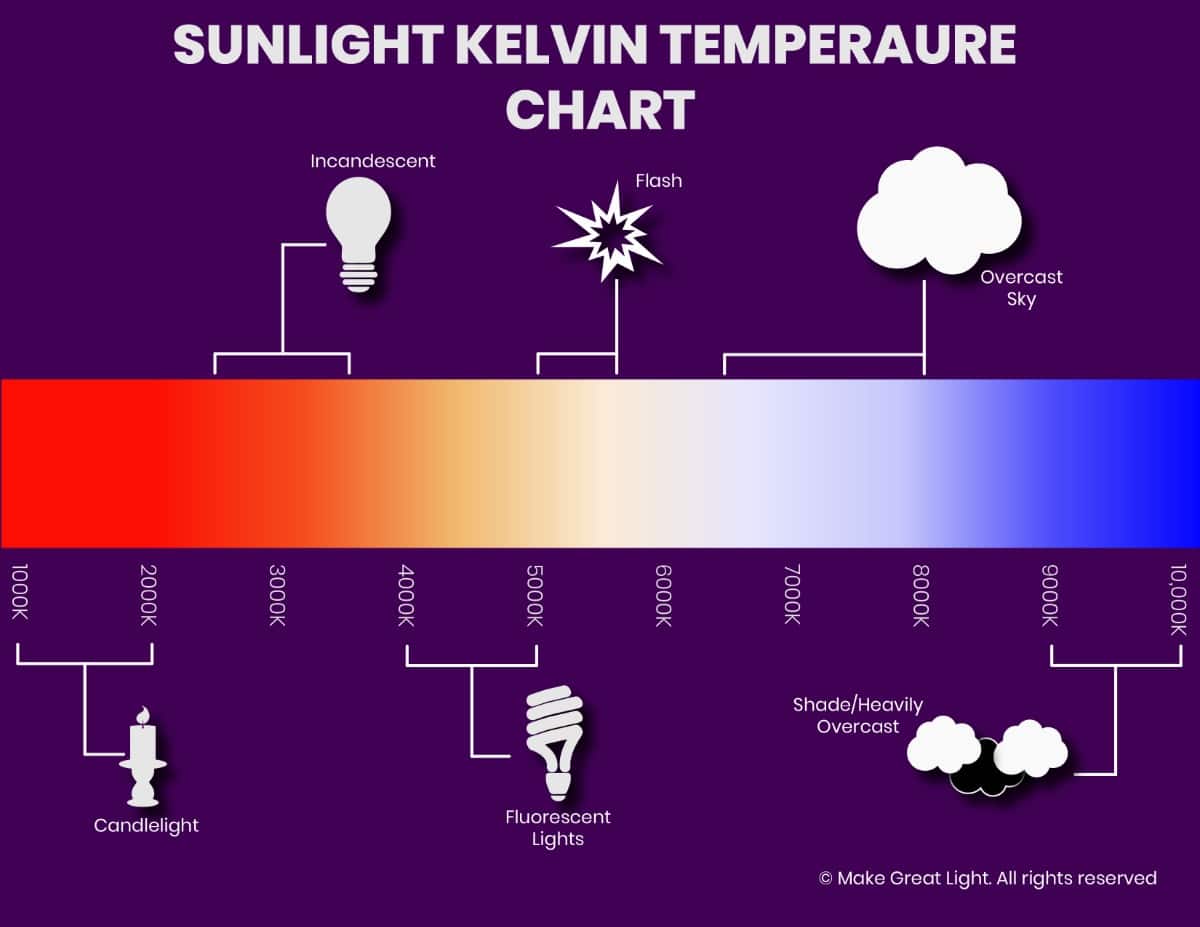It’s been decades since our daily activity revolved around the rising and setting of the sun. From a historical standpoint, electricity and artificial lighting have only been widely available throughout the US since the 1930s.
The significant technological advances since that time have had a remarkable impact on the way we live.
While modern technology has its advantages, the brilliant glow emitted from our electronic devices and fluorescent lights can have a negative impact on the physical and emotional well-being of those who are prone to light-sensitivity.
Table of Contents
The Many Potential Symptoms of Light Sensitivity
Nearly everyone has experienced the discomfort of encountering a bright light after spending time in low light or darkness. The discomfort is real, but typically short-lived.
Some of us are not so fortunate.
A significant number of people have a strong, ongoing reaction to light exposure, a condition known as photophobia. For those living with photophobia, exposure to daylight or strong artificial lights can cause significant discomfort or pain.
If you are experiencing light sensitivity or intolerance, you may be painfully aware of some of the following fluorescent light sensitivity symptoms:
- Excessive tear production in daylight, fluorescent lights, or when viewing a computer screen
- Involuntary or excessive blinking to minimize discomfort
- Inability to fully open your eyes with changes in light intensity or prolonged exposure
- Frequent headaches or migraines with exposure to certain types of light
- Inflammation, redness, dry eyes, or other symptoms of eye strain
- Squinting or difficulty maintaining focus, including blurred or double vision
Some people living with photophobia experience symptoms within seconds of light exposure. Other people notice increasing discomfort throughout the day.
Researchers investigating the neurological implications of photophobia recently identified the neural mechanisms that trigger some of the lesser-known autonomic symptoms of photophobia.
These symptoms of photophobia can including lightheadedness, nausea, chest tightness, and shortness of breath in those who are light sensitive.
Photophobia is a Potentially Debilitating Symptom of Numerous Health Conditions
While photophobia can be a side effect of several medications, light sensitivity is a common symptom seen in many ophthalmic, autoimmune, and neurological conditions.
Those who experience light sensitivity as a symptom of a chronic health condition are typically aware of how light exposure can cause their symptoms to flare.
Just a few of the numerous health conditions that recognize photophobia as a likely symptom include:
- Chronic dry eye
- Migraine
- Glaucoma
- Fibromyalgia syndrome
- Autism spectrum disorders
- Depression
- Functional neurological disorders
- Sjogren’s syndrome
- Ehlers-Danlos syndrome
- Lyme disease
- Retinal and corneal disorders
- Anxiety disorders
- Blepharospasm
- Multiple sclerosis
Although researchers are not sure why it happens, evidence suggests that photophobia can also contribute to the symptoms of anxiety, panic attacks, and other common mood disorders.
While evidence shows light sensitivity can increase the symptoms of mood disorders, a dramatic reduction in light exposure often yields the same results.
Read more: What Is Photophobia?
The Headache-Inducing Signals that Contribute to Light Sensitivity
References to photophobia date back to medical writings of the 1930s.
But, the neurological factors contributing to the headache-inducing effects of photophobia were not well understood until a few years ago. The connections were revealed as researchers were investigating the correlation between light sensitivity and migraine pain.
Researchers at Harvard Medical School and Beth Israel Deaconess Medical Center identified the pathways from the eyes to areas of the brain that are active during a migraine episode.
Researchers concluded that light sensitivity had little to do with vision, as many participants were blind.
During their investigations, these scientists discovered a significant type of nerve cell in the eye.
They’re called intrinsically-photosensitive retinal ganglion cells, and they’re not involved in vision.
These light-sensitive cells are more reactive to some light wavelengths than others, particularly to the blue light spectrum commonly emitted from fluorescent lights and the screens of our electronic devices.
With fluorescent bulbs, the higher the color temperature, the more blue light present in the light they emit.
Fluorescent bulbs in the 5000-6500k range emit the highest blue content. Bulbs radiating at 4100k and 3500K disburse light in the greenish-yellow and orange range.
The blue light emitted from artificial light is far more intense than the blue light found in natural, healthy sunlight. This can have a significant impact on those who are sensitive to blue light wavelengths.
Heightened Sensitivity Caused by Visual Stimuli
Most headaches associated with photophobia are believed to be caused by glare and eyestrain.
That said, sensitivity to blue light wavelengths could explain why so many people experience a significant amount of headache pain from fluorescent light exposure.
Research also shows that the symptoms associated with photophobia can be triggered by the pulsing or flickering of artificial light.
In addition to migraine pain, other types of headaches triggered by this visual stimuli include:
- Tension Headaches – photophobia can be present between headaches or during
- Cluster Headaches – severe, recurring pain limited to one side of the head
- New Daily Persistent Headaches – recurring pain in a person with no previous migraine history
- Concussion Headaches – Headaches caused by fluorescent lighting after sustaining a traumatic brain injury. Light exposure after injury can also cause fatigue, dizziness, and nausea.
Even Flicker-Free Lights Transmit Chaotic Signals
Improvements have been made to fluorescent lighting to reduce the amount of flickering and minimize the annoying hum.
However, it’s important to understand that “flicker-free” fluorescent lights still flicker, but the pulses are not perceptible to your eyes.
While your brain may not consciously recognize the quiver of a “flicker-free” light, the signaling to your brain can still be considered quite chaotic.
Not everyone will experience headache pain from light sensitivity or imperceptible fluorescent flickers.
If you are susceptible to the subliminal flicker of fluorescent lighting, you may recognize some of the lesser-known signs and symptoms:
- Eye, neck, or shoulder pain
- Irritability
- Heightened anxiety symptoms
- Disorientation, confusion, or attention deficit
- Dizziness or nausea
The intensity and color of fluorescent light does not bother everyone. Those who are sensitive may notice that their sensitivity levels change depending on the color spectrum of individual lighting units and where the artificial light falls on their eyes.
That explains why some lights may be bothersome, while others are not.
The Potential Impact of Artificial Light on Sleep Cycles
Your body relies on sunlight to regulate many essential functions. Natural sunlight boosts essential levels of vitamin D, regulates sleep cycles, and influences the neurotransmitters that regulate your moods and emotions.
While artificial light is designed to mimic natural light, it does not rely on the full-color spectrum of sunlight.
Since fluorescent light only utilizes a few colors in the light spectrum, it cannot have the same aesthetic and biological impact as sunlight.
Artificial lighting can cause significant biological dysregulation, particularly in the processes that regulate the sleep cycles of those who are sensitive.
Consider the following potential health effects of prolonged, consistent exposure to fluorescent light:
- Disruption in circadian rhythms that can cause insomnia
- Sleep cycle dysregulation that impairs REM sleep
- Interruption of the natural decrease in body temperature during sleep
- Increased cortisol levels, natural stress hormones, that can make falling asleep difficult
- Reduced heart rate variability and increased blood pressure that can interfere with sleep
The disruption of sleep cycle regulation alone can have a significant impact on your overall health and wellbeing.
Sleep deprivation is commonly linked to many serious health concerns.
These include weight gain, mood disorders, cardiovascular disorders, diabetes, and stroke.
You can offset the effects of blue light and its chaotic signals that can disrupt your sleep cycles by increasing your exposure to natural light.
It’s important to be sure to get at least 30 minutes of natural sunlight each day.
Many people also find it quite beneficial to dim their lights and limit their use of electronic devices such as computers, tablets, and cell phones, a few hours before turning in for the night.
The blue light emitted from electronic devices impairs melatonin production, your natural sleep hormone.
By restricting evening blue light exposure, melatonin production increases.
The Potential Consequences of Indoor Ultraviolet Light
The fluorescent bulbs illuminating your home, shopping center, office building, or classroom light your surroundings by utilizing two types of interaction.
Electrical energy interacts with gasses to emit ultraviolet light.
The phosphorous layer coating the bulb absorbs these UV rays and creates visible light.
The phosphorus material used in bulb manufacturing determines the light spectrum, the color of the light.
Many people are still unaware of the potential damage that indoor UV radiation can inflict on their eyes.
A report published in the (2011) American Journal of Public Health estimates that fluorescent lighting can increase your risk of eye disease by as much as 12 percent.
The lighter your eye color, the more susceptible your eyes are to damage. Consider the following consequences of UV exposure:
- Increased risk of pterygia (corneal bumps)
- Increased risk of cataracts
- Elevated risk of macular degeneration
- Symptoms of eyestrain (watery, tired eyes or frequent headaches)
Consistent protection from ultraviolet radiation is essential for eye health. Blocking UV rays outdoors is easily achieved by making a habit of wearing UV-protective sunglasses.
Even if you are significantly sensitive to the effects of artificial lighting, you may want to resist the temptation to wear sunglasses indoors. Wearing dark glasses to minimize your symptoms seems like a logical alternative to discomfort. However, consistently shielding your eyes from indoor lighting can increase the severity of your symptoms.
The Effects of Fluorescent Lights on Productivity and Learning
The light of a fluorescent bulb is generated by the ionization of mercury and gasses in a phosphor-coated tube.
Many researchers have therefore investigated the potential impact of fluorescent lights on human health, particularly the health of our children.
While there is no direct cause for alarm, there have been indications that fluorescent lights can have an effect on the classroom environment.

Children can be just as affected by fluorescent lights as adults, but may not recognize the light as the cause of their distress.
Fluorescent lighting has a significant role in photophobia, headaches, and sleep disturbances.
Additionally, research suggests that fluorescent lighting can also have a significant effect on school performance. Consider the following studies:
- In the mid-1970s, James Ott compared the behavior of Florida school children. He compared those who were taught in a room lit with standard fluorescent bulbs against students participating in classrooms lit by newly developed full-spectrum bulbs. Full-spectrum bulbs provide lighting that more closely resembles natural daylight. Ott concluded that children learning in rooms with fluorescent lighting were less attentive in class. This report also suggested that student exposure to a “radiation stress condition” triggered hyperactive behavior.
- A 1993 study conducted through the University of Nevada concluded that first-grade test subjects appeared less focused in standard fluorescent lighting. When classroom lighting was changed, focus improved, and their blood pressure dropped an average of nine percent. Focus and blood pressure returned to baseline when the classroom was restored to its original configuration.
- A 2010 paper published by Kansas State University investigated the effects of lighting in education. Emily Long reported that the light intensity, buzz, and flickering of worn fluorescent bulbs increased the agitation and repetitive motions of children living with Autism Spectrum Disorder. Long suggested that alternative lighting sources should be considered for special needs and standard group classrooms. This would provide a more comfortable, less distracting learning environment.
Many people are sensitive to the effects of artificial light. While our ability to effortlessly illuminate the darkness has significantly changed the way we interact with our environment, natural light is still considered the healthiest light source.
Natural sunlight, white light, includes all the colors of the visible light spectrum at equal intensities.
Fluorescent Lighting Does Have Distinct Advantages
Fluorescent lighting is energy efficient and cost-effective, and most people are not particularly sensitive to its effects.
It is unlikely that those making the decisions about the type of light used to illuminate our schools, office buildings, and shopping centers will abandon fluorescent lighting anytime soon.
While the Department of Energy recommends using fluorescent lights for commercial and private use, many people find the glare, flicker, or color spectrum of fluorescent bulbs contributes to photophobia, headaches, sleeplessness, and numerous symptoms seemingly unrelated to light exposure.
Those who are affected by fluorescent lights do have options. Studies show that covering fluorescent lights with fluorescent light filters reduces the symptoms of photophobia and makes living and working in artificial lighting more comfortable for those with fluorescent light sensitivity.
The Best Fluorescent Filters Block UV Rays While Transforming the Color Spectrum
Many companies sell fluorescent light covers. Most light fixture covers simply mask the glare of fluorescent lights.
The best fluorescent light filters have the ability to transform the harsh, glaring light of a fluorescent bulb to a soft white light and block the UV rays that could harm your eyes or cause conditions like lupus or fibromyalgia to flare.
For transformative lighting covers that eliminate glare, block harmful UV rays, and transform fluorescent lighting to full-spectrum glory, visit Make Great Light. Our easily installed fluorescent light covers are an affordable option for alleviating the discomfort and distress of fluorescent light sensitivity.
Additional Sources:
https://hms.harvard.edu/news/bright-lights-big-headache
https://www.nature.com/articles/d41586-018-00568-7
https://www.psychologytoday.com/us/blog/mental-wealth/201409/why-cfls-arent-such-bright-idea
https://www.mayoclinic.org/diseases-conditions/cluster-headache/symptoms-causes/syc-20352080


I would appreciate mention of LED lighting … is it better for some of these health concerns and for learning? It certainly is a low cost option, etc.
When I managed Hotel/casinos in Nevada as I assumed the GM or CEO position I had the CFO purchase incandescent desk lighting with full spectrum bulbs for the accounting staff, they were forever grateful.
My wife is fluorescent light sensitive for years, but has repeatedly been brushed off by many so called medical doctors as bull shit, made up, crazy, paranoid, etc, etc.
Great to see that there are still a few scientist in this world.
Thank You
I have lupus and suffer daily as a nurse case manager spending many hour a day in doctor’s offices under these horrid lights. What is even more ridiculous-the amount of natural light available thru all of the open windows. I am actually suffering right this minute as I am up early to type reports with horrific ringing in my ears, burning eyes, headache and facial swelling from a 9 hour day of “baking” under those lights yesterday as doctors ran over an hour late as I cooked in exam rooms. Those with autoimmune disorders suffer the worst daily fate due to these lights.
Sorry to hear that Victoria. Our light filters work very well at blocking UV. Please have your clinic reach out to us regarding solutions for your light sensitivity.